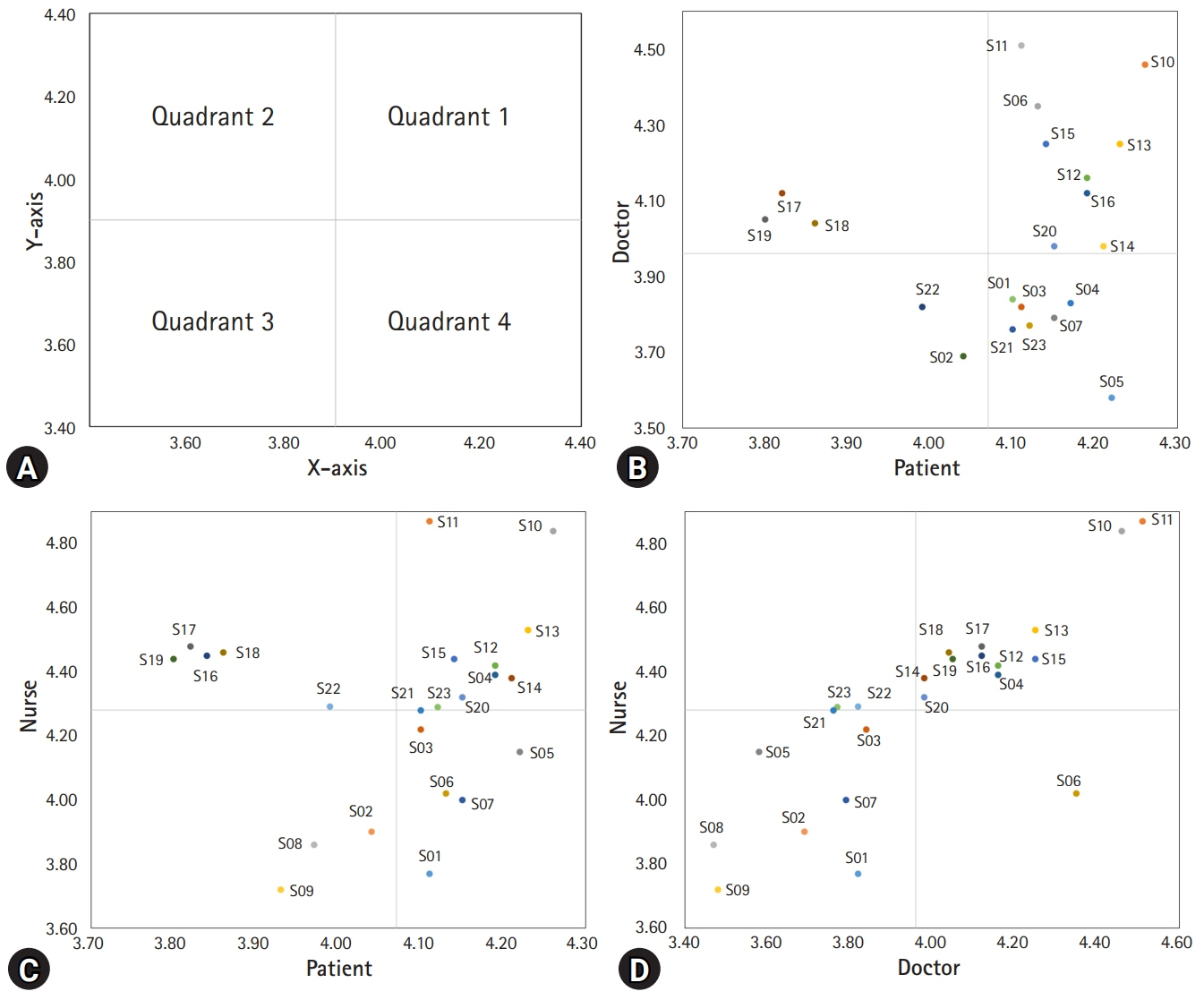J Yeungnam Med Sci.
2022 Apr;39(2):116-123. 10.12701/yujm.2021.01319.
User perception of medical service robots in hospital wards: a cross-sectional study
- Affiliations
-
- 1Department of Neurosurgery and Medical Research Institute, Pusan National University Hospital, Busan, Korea
- KMID: 2529269
- DOI: http://doi.org/10.12701/yujm.2021.01319
Abstract
- Background
Recently, there have been various developments in medical service robots (MSRs). However, few studies have examined the perceptions of those who use it. The purpose of this study is to identify user perceptions of MSRs.
Methods
We conducted a survey of 320 patients, doctors, and nurses. The contents of the survey were organized as follows: external appearances, perceptions, expected utilization, possible safety accidents, and awareness of their responsibilities. Statistical analyses were performed using t-test, chi-square test, and analysis of variance.
Results
The most preferred appearance was the animal type, with a screen. The overall average score of positive questions was 3.64±0.98 of 5 points and that of negative questions was 3.24±0.99. Thus, the results revealed that the participants had positive perceptions of MSR. The overall average of all expected utilization was 4.05±0.84. The most expected utilization was to guide hospital facilities. The most worrisome accident was exposure to personal information. Moreover, participants thought that the overall responsibility of the robot user (hospital) was greater than that of the robot manufacturer in the case of safety accidents.
Conclusion
The perceptions of MSRs used in hospital wards were positive, and the overall expected utilization was high. It is necessary to recognize safety accidents for such robots, and sufficient attention is required when developing and manufacturing robots.
Keyword
Figure
Reference
-
References
1. Nam KH, Kim DH, Choi BK, Han IH. Internet of things, digital biomarker, and artificial intelligence in spine: current and future perspectives. Neurospine. 2019; 16:705–11.2. Wang TM, Tao Y, Liu H. Current researches and future development trend of intelligent robot: a review. Int J Autom Compt. 2018; 15:525–46.3. Lee JY, Song YA, Jung JY, Kim HJ, Kim BR, Do HK, et al. Nurses’ needs for care robots in integrated nursing care services. J Adv Nurs. 2018; 74:2094–105.4. Koh DH, Jang WS, Park JW, Ham WS, Han WK, Rha KH, et al. Efficacy and safety of robotic procedures performed using the da Vinci robotic surgical system at a single institute in Korea: experience with 10000 cases. Yonsei Med J. 2018; 59:975–81.5. Hong E, Shin S. Nurses’ perceptions of care robots in long-term care facilities. J Korean Gerontol Nurs. 2019; 21:22–32.6. Lohse M, Hegel F, Swadzba A, Rohlfing K, Wachsmuth S, Wrede B. What can I do for you? Appearance and application of robots. Paper presented at: The 33rd Annual Convention of the Society for the Study of Artificial Intelligence and the Simulation of Behaviour. 2007 Apr 2–5; Tyne, UK. New York. Curran Associates, Inc. 2007. p. 121–6.7. Wu YH, Fassert C, Rigaud AS. Designing robots for the elderly: appearance issue and beyond. Arch Gerontol Geriatr. 2012; 54:121–6.8. Hegel F, Lohse M, Wrede B. Effects of visual appearance on the attribution of applications in social robotics. Paper presented at: The 18th IEEE International Symposium on Robot and Human Interactive Communication. 2009 Sep 27–Oct 2; Toyama, Japan. Piscataway (NJ). IEEE. 2009. p. 64–71.9. Prakash C, Kumar R, Mittal N. Recent developments in human gait research: parameters, approaches, applications, machine learning techniques, datasets and challenges. Artif Intell Rev. 2018; 49:1–40.10. Kirkpatrick K. Legal issues with robots. Commun ACM. 2013; 56:17–9.
- Full Text Links
- Actions
-
Cited
- CITED
-
- Close
- Share
- Similar articles
-
- Nursing Tasks and Practice Environment for Nursing Work Perceived by Nurses Working on Comprehensive Wards versus General Wards
- Clinical Use of Robots as a Part of Rehabilitation Medicine
- The Effects of Communication Ability and Nursing Work Environment on Geriatric Nursing Practices of Nurses in Comprehensive Nursing Care Service Wards: A Cross-Sectional Study
- The effect of nurses' perceptions and satisfaction with hospital rapid response teams on burnout related to emergency situations in Korea: a cross-sectional study
- Role of computers and robots in future otological surgery



